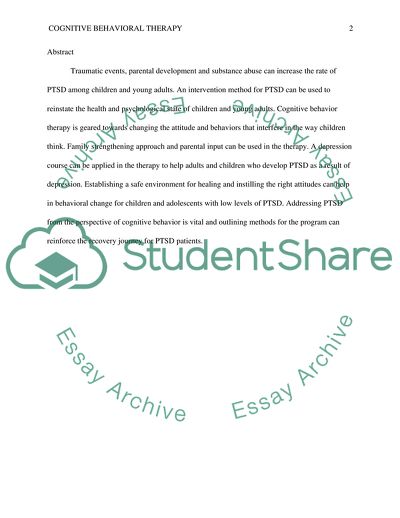Cite this document
(Cognitive Behavioral Therapy as an Intervention for PTSD Literature review Example | Topics and Well Written Essays - 1250 words, n.d.)
Cognitive Behavioral Therapy as an Intervention for PTSD Literature review Example | Topics and Well Written Essays - 1250 words. https://studentshare.org/psychology/1874703-cognitive-behavioral-therapy-as-intervention-for-ptsd
Cognitive Behavioral Therapy as an Intervention for PTSD Literature review Example | Topics and Well Written Essays - 1250 words. https://studentshare.org/psychology/1874703-cognitive-behavioral-therapy-as-intervention-for-ptsd
(Cognitive Behavioral Therapy As an Intervention for PTSD Literature Review Example | Topics and Well Written Essays - 1250 Words)
Cognitive Behavioral Therapy As an Intervention for PTSD Literature Review Example | Topics and Well Written Essays - 1250 Words. https://studentshare.org/psychology/1874703-cognitive-behavioral-therapy-as-intervention-for-ptsd.
Cognitive Behavioral Therapy As an Intervention for PTSD Literature Review Example | Topics and Well Written Essays - 1250 Words. https://studentshare.org/psychology/1874703-cognitive-behavioral-therapy-as-intervention-for-ptsd.
“Cognitive Behavioral Therapy As an Intervention for PTSD Literature Review Example | Topics and Well Written Essays - 1250 Words”. https://studentshare.org/psychology/1874703-cognitive-behavioral-therapy-as-intervention-for-ptsd.


